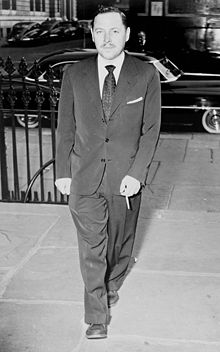
Clive Barnes, Review of 'Cat on a Hot Tin Roof' (1974)

The American dramatist Tennessee Williams (1911–83), set his dramatic and often painful family dramas in the South, winning wide acclaim. The revival of Cat on a Hot Tin Roof by the American Shakespeare Theater was noted for its revision of the final act, its imaginative setting, and the complex performances of the actors.
People used to think that Tennessee Williams's plays were about sex and violence. How wrong they were—they are about love and survival. Mr. William's Cat on a Hot Tin Roof is now 20 years old, and in its first day it was regarded as something of a shocker. Now even though a certain four-letter word has been restored where a euphemism once reigned stupidly supreme, I doubt whether anyone is going to be shocked.…But I hope they will be affected. This is a gripping and intensely moving play, a play that can hold its own with anything written in the post-O'Neill American theater.
The Cat is Maggie—a Southern beauty of indefinite lineage. She is married to Brick, a handsome, former football player, now TV sportscaster. The marriage could be perfect, but Brick is an impotent who fears that he failed his best friend, apparently a homosexual. Brick's father, Big Daddy, a self-made Southern millionaire, is dying of cancer. He doesn't know it. His wife doesn't know it. But the family, including Brick's brother and sister-in-law, they know it. It is Big Daddy's 65th, and last, birthday.
Michael Kahn's new staging, which opened at the ANTA Theater last night for a limited run, really is new. It originated at the American Shakespeare Theater in Connecticut this summer, and it offers a rewarding new variant on the original play.
As is well known, the Broadway version, directed by Elia Kazan, incorporated in its last act a number of Mr. Kazan's own ideas. Indeed in most printed versions of the play the last act exists in two versions, the so-called "Broadway" version, and the original. In the latter Big Daddy does not appear and Brick, faced with some faint prospect of fatherhood, changes somewhat in his character. Mr. Kahn, presumably with the playwright's permission, seems to have taken the best of both acts—following Mr. Kazan in his inclusion of Big Daddy in the last act (and Kazan was right in his thinking there), and yet following the original in its far more sensitive handling of the final relationship between Brick and Maggie. The result seems to be a definitive version of the play.
Twenty years ago everyone made much of the symbolism in Tennessee Williams, and undoubtedly the symbolism is here. The magnolia scented bedroom that used to belong to the old-maidish bachelors that once owned the plantation, the concept of the bed itself as Maggie's territory, or Brick's possible latent homosexuality symbolized by his hazy impotence—yes, all these are symbols of the sexual warfare that underlies the story. But the story itself, and the compassion Mr. Williams brings to the telling of it, is what really matters.
Mr. Williams has the one vital gift a playwright must possess—he holds the interest. He makes you care by showing you a world. His characters are drawn with rough strokes, for Mr. Williams always demonstrates by exaggeration. He is also a playwright who wants to be very popular (or, rather, very much loved) and this sometimes leads him into cheapness. But he is a master. His plays have a time, a place, a development and ring true.
He is lucky with Mr. Kahn, whose direction seems directly aimed at lowering the play's hot-house temperature, and at making a domestic drama rather than an eternal triangle between a woman, a reluctant man and a bed. As a result Big Daddy becomes rather more important than before.
The imaginative setting by John Conklin, the cleverly evocative costumes by Jane Greenwood and the dappled lighting by Marc B. Weiss, are all splendid, but if Mr. Williams has been fortunate in Mr. Kahn and his collaborators, Mr. Kahn has been equally fortunate in his cast, or at least clever in his casting.
Elizabeth Ashley was much praised for her Maggie in Connecticut, but even then she was sold short. Sensuous, withdrawn, composed and determined, Miss Ashley's Maggie vibrantly combines charm with grit. She can stand outside a conversation like a cobra, or flutter in like a bird. Splendid.
Keir Dullea's ironic, embittered Brick makes her the perfect partner. He has precisely "the charm of the defeated," with his alcoholic eyes staring into the mid-distance of half-forgotten memory, still waiting for the click of oblivion. Both this Brick and this Maggie are oddly vulnerable, which is also the special quality of Fred Gwynne's blustering, hollowed out Big Daddy. These three performances are so right that they detract from the more shallow playing of the rest of the cast, including Kate Reid, slightly too shrill as a miscast Big Mama.
This is a glowing play, memorably staged. It gets Broadway's dramatic season off to a flying start.
Copyright © 1974 by The New York Times Co. Reprinted with permission.